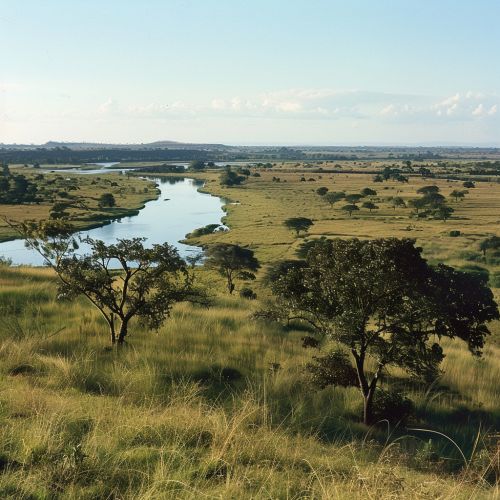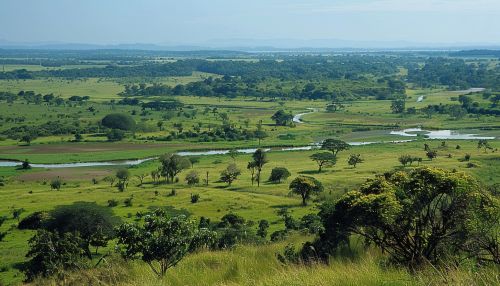Orinoquía Region
Geography
The Orinoquía Region, also known as the Llanos Orientales, is a vast geographical area located in the eastern part of Colombia. It is characterized by its extensive plains, which are part of the larger Llanos biome that extends into Venezuela. The region is bounded by the Andes Mountains to the west, the Amazon Rainforest to the south, and the Guiana Shield to the east. The Orinoco River, one of the longest rivers in South America, flows through this region, giving it its name.


Climate
The climate of the Orinoquía Region is predominantly tropical savanna, characterized by a distinct wet and dry season. The wet season typically occurs from April to November, with heavy rainfall and occasional flooding. The dry season, from December to March, is marked by high temperatures and sparse precipitation. The average annual temperature ranges between 24°C and 28°C, with little variation throughout the year.
Flora and Fauna
The Orinoquía Region is home to a diverse array of flora and fauna, adapted to the unique climatic conditions of the area. The vegetation is primarily composed of savanna grasses, interspersed with gallery forests along rivers and streams. Notable plant species include the Moriche Palm (Mauritia flexuosa) and various species of Acacia.
The region supports a rich biodiversity of wildlife, including large mammals such as the Capybara (Hydrochoerus hydrochaeris), Jaguar (Panthera onca), and Giant Anteater (Myrmecophaga tridactyla). Bird species are also abundant, with the Orinoco Goose (Neochen jubata) and the Scarlet Ibis (Eudocimus ruber) being particularly noteworthy. The rivers and wetlands are inhabited by numerous fish species, as well as the Orinoco Crocodile (Crocodylus intermedius), which is critically endangered.
Hydrology
The Orinoco River is the principal hydrological feature of the Orinoquía Region. It originates in the Parima Mountains of Venezuela and flows westward into Colombia before turning northward to empty into the Atlantic Ocean. The river's extensive drainage basin covers approximately 880,000 square kilometers, making it one of the largest river systems in the world.
The region's hydrology is further characterized by numerous tributaries, including the Meta River, Guaviare River, and Vichada River. These rivers play a crucial role in the local ecosystem, providing water for agriculture, supporting aquatic life, and facilitating transportation.
Human Settlement and Culture
The Orinoquía Region has a relatively low population density compared to other parts of Colombia. Indigenous communities, such as the Sikuani, Piaroa, and Guahibo, have traditionally inhabited the area, relying on subsistence agriculture, fishing, and hunting. In recent decades, there has been an influx of settlers from other regions of Colombia, leading to increased agricultural and cattle ranching activities.
Culturally, the region is known for its Joropo music and dance, which are integral to local festivals and celebrations. The llanero (plainsman) culture, characterized by its distinctive cowboy lifestyle, is also a significant aspect of the region's identity.
Economy
The economy of the Orinoquía Region is primarily based on agriculture, cattle ranching, and oil extraction. The fertile plains are well-suited for the cultivation of crops such as rice, maize, and cassava. Cattle ranching is a major economic activity, with vast ranches dotting the landscape.
In recent years, the discovery of significant oil reserves has led to the development of the petroleum industry, particularly in the departments of Meta and Casanare. This has brought economic growth to the region, but also environmental challenges and social conflicts.
Environmental Challenges
The Orinoquía Region faces several environmental challenges, including deforestation, soil degradation, and water pollution. The expansion of agriculture and cattle ranching has led to the clearing of vast areas of natural vegetation, impacting biodiversity and ecosystem services. Additionally, the oil industry has raised concerns about contamination of water resources and habitat destruction.
Efforts are being made to address these issues through sustainable land management practices, reforestation projects, and the establishment of protected areas. Environmental organizations and local communities are actively involved in conservation initiatives to preserve the region's unique natural heritage.
